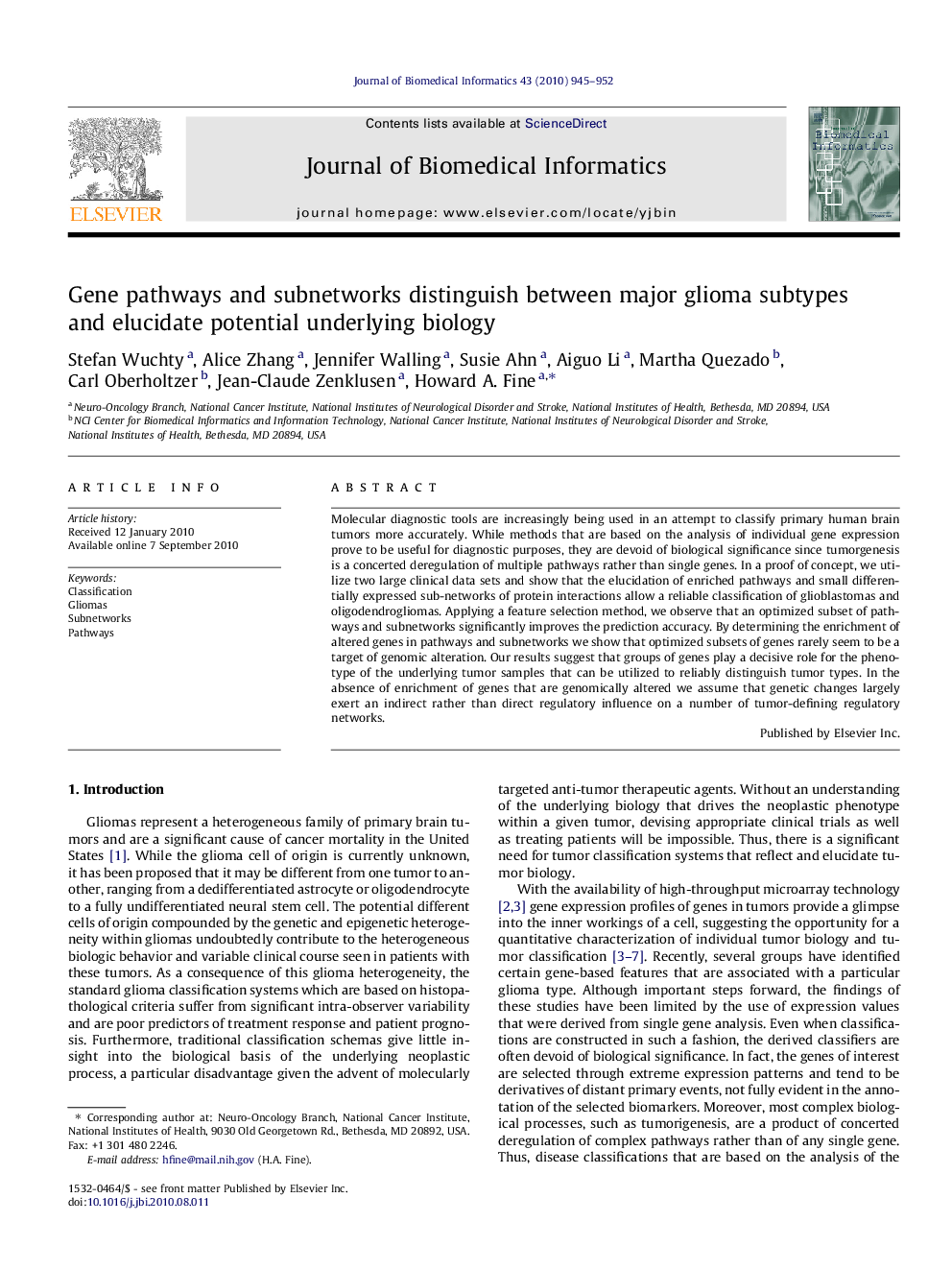| Article ID | Journal | Published Year | Pages | File Type |
|---|---|---|---|---|
| 518370 | Journal of Biomedical Informatics | 2010 | 8 Pages |
Molecular diagnostic tools are increasingly being used in an attempt to classify primary human brain tumors more accurately. While methods that are based on the analysis of individual gene expression prove to be useful for diagnostic purposes, they are devoid of biological significance since tumorgenesis is a concerted deregulation of multiple pathways rather than single genes. In a proof of concept, we utilize two large clinical data sets and show that the elucidation of enriched pathways and small differentially expressed sub-networks of protein interactions allow a reliable classification of glioblastomas and oligodendrogliomas. Applying a feature selection method, we observe that an optimized subset of pathways and subnetworks significantly improves the prediction accuracy. By determining the enrichment of altered genes in pathways and subnetworks we show that optimized subsets of genes rarely seem to be a target of genomic alteration. Our results suggest that groups of genes play a decisive role for the phenotype of the underlying tumor samples that can be utilized to reliably distinguish tumor types. In the absence of enrichment of genes that are genomically altered we assume that genetic changes largely exert an indirect rather than direct regulatory influence on a number of tumor-defining regulatory networks.
